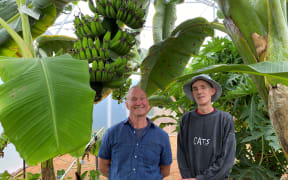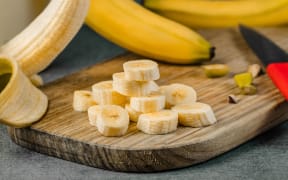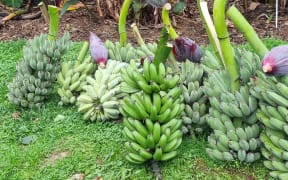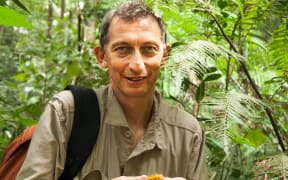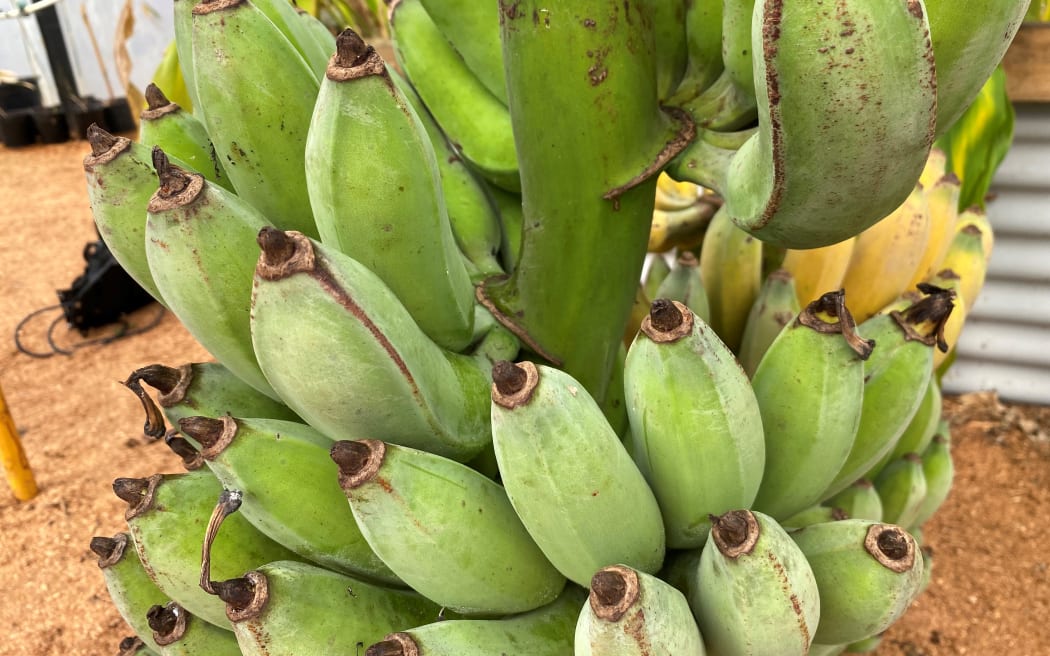
Banana bunches ripening at the Kotare Subtropicals nursery in Maungatapere southwest of Whangārei. Photo: RNZ/Leah Tebbutt
A Northland horticulturist is hoping to slash the carbon miles of one of the country's most popular fruits.
New Zealand imported more than 81,000 tonnes of bananas in 2022 - which makes up about a third of all fresh produce imports, according to large pan-industry group United Fresh.
But at Kotare Subtropicals, a wholesale nursery at Maungatapere southwest of Whangārei, its orchard manager Geoff Mansell hoped consumers would soon be able to buy locally-grown bananas.
The nursery has around three hectares of feijoas trees, figs and now bananas - including Honduran hybrids such as Goldfinger, Mona Lisa, Bonanza and High Noon, grown both outdoors and indoors.
Mansell said the business was hoping to add value to the land by establishing the bananas, which were a burgeoning sector of tropical and sub-tropical produce.
"We started the new banana plantation to provide an additional crop type so we could generate more value from our land," Mansell said.
"After a few seasons we realised we couldn't make enough income off our feijoa and figs crops."
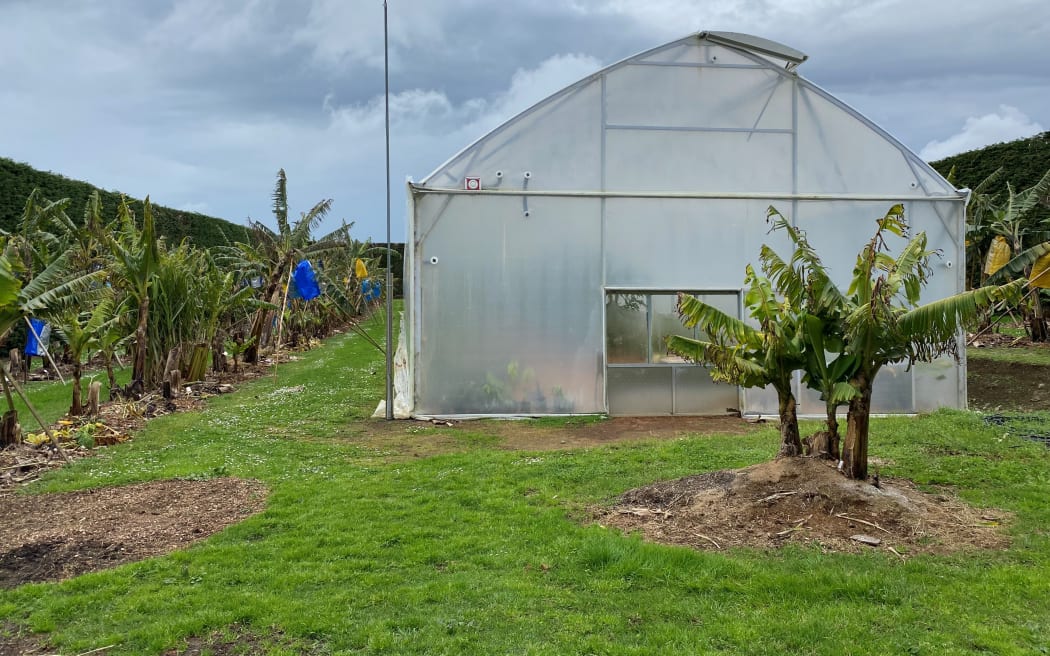
In addition to bananas, Kotare Subtropicals specialises in growing subtropical fruits such as papaya, pineapple and jackfruit. Photo: RNZ/Leah Tebbutt
Part of a collective of tropical growers, hundreds of kilograms of locally-grown bananas can go out to Northland supermarkets each month, when supply is good, he said.
Mansell said they hoped to expand into Northland and Auckland - and to help growers in other areas of warmer climates establish banana plantations and shore up local supplies.
"In terms of import substitution, it's a good way to bring New Zealand food to the table and into supermarkets, growing a crop or other crops such as papayas and pineapples and other sub-tropicals which are now viable in our climate.
"That brings about also employment benefits and give us a wider range of products available to the public to customers at supermarkets or through the markets."
He said interest in growing bananas locally had been growing over the past five years amid land-use change and as growers sought high-value crops.
"What we want out of it is to grow that enthusiasm for locally-grown and high quality produce going into the supermarkets."
Mansell said strong subtropical plant sales indicated good demand for them, and local groups like the NZ Rare Fruit Growers Facebook page had gained around 20,000 members within five years.

Geoff Mansell (left) is part of a collective of tropical growers and says when supply is good, hundreds of kilograms of locally-grown bananas can go out to Northland supermarkets each month. Photo: RNZ/Leah Tebbutt
The most critical element for a banana plantation in New Zealand was to have adequate shelter to buffer plants from the strong winds, he said.
Mansell worked on industry trials to test the feasibility of growing tropical and sub-tropical fruits in New Zealand before establishing the new banana plantation.
The nursery also specialises in other subtropical fruits like papaya, pineapple and jackfruit.
